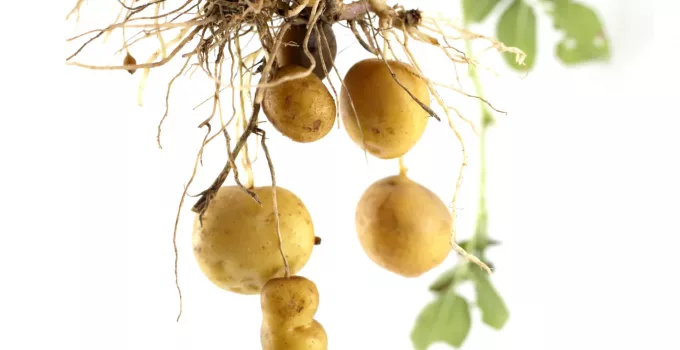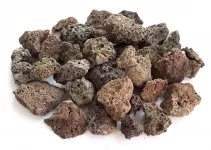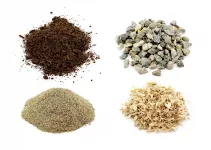Let’s get one thing straight right from the start: growing hydroponic potatoes is hard. It’s not unachievable but this will not be an easy article.
When the topics of growing herbs in hydroponics or lettuce hydroponically come up, then we say that it’s easy. You should definitely do it, you’ll love it.
Even if we’re talking about hydroponic tomatoes, we can still recommend it, although I emphasize that it’s not that easy. The same goes for strawberries, blueberries, peppers, cucumbers etc.
However, growing crops that usually grow in the ground in just water and nutrients and using a growing medium, those are the hardest to get to the harvesting stage.
Onions and carrots definitely join the list and so do beets, radishes, leeks, yams, and parsnips.
All these require extra care and extra work. That means that beginners should first focus on the plants that I’ve mentioned above.
If you decide that growing hydroponic potatoes is too difficult, you can continue growing in soil and you’ll have wonderful crops. Check out my guide on how to plant sprouted potatoes because these tubers are perfect for growing in containers, raised garden beds and in the garden.
Table of Contents
How to Grow Hydroponic Potatoes from Seed Potato
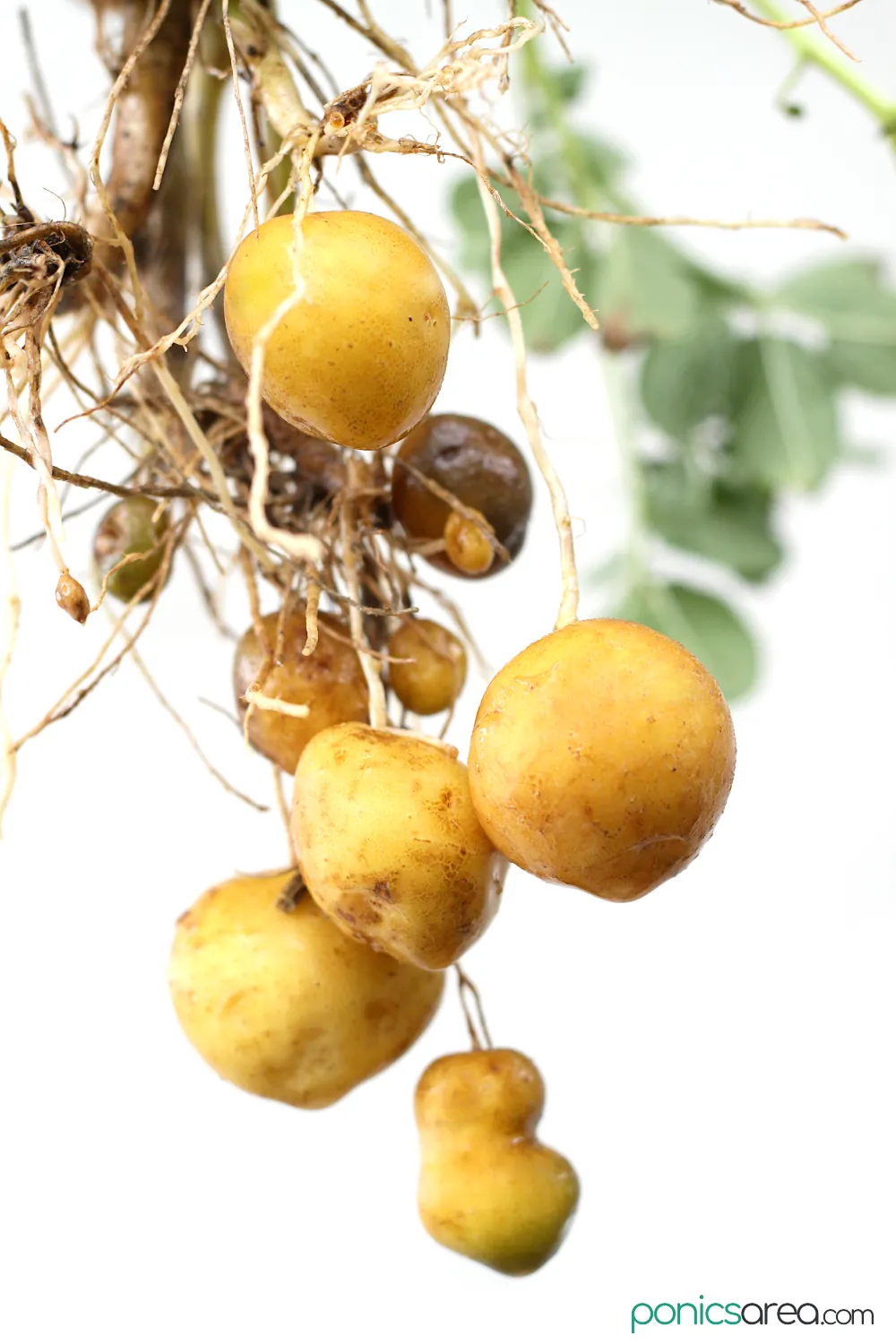
Hydroponically grown potato plant
Unlike a large majority of plants, which are grown from seeds produced by flowers, potatoes are not grown from that.
They are grown from small potatoes that have tiny growing points on them – seed tubers.
The growing points on potato tubers are also called eyes.
What is seed potato?
These are not actually seeds, they’re actual small potato tubers. We grow these plants by planting portions of the root structure.
The structure becomes:
- mother tuber (parent), which is the seed potato
- from these, many tubers are produced, which are actually our potatoes that we’re trying to grow hydroponically
- the thing is that these tubers need plenty of room to grow in order to get a good yield
It is because of this kind of propagation that we are able to reach the harvesting stage pretty quickly.
However, don’t start growing a new plant from your leftovers, from old potatoes that have been forgotten in the vegetable box because they won’t produce good crops.
You need to buy the seed potato, just like we pretty much buy all our seeds. They’re quite cheap so get the absolute best.
Get disease-free, certified seed potato. Don’t use those that have bruises, soft spots, cracks or show signs of rotting.
The most common varieties to go for are Red Pontiac, Goldrush, Rio Grande, Magic Molly, Yukon Gold.
You can also try growing fingerling varieties (Swedish Peanut Fingerling) because these are small and narrow, they’re great for baking.
Should seed potato be planted directly into the hydroponic system?
We definitely don’t need to germinate the seed potato since these are smaller potatoes from which the plants will grow.
That means that the small tuber is placed directly into the growing medium. The growing medium is placed in a grow bed. The dimensions of the grow beds depend on the system that you’re using for growing potatoes hydroponically.
You can actually cut the whole seed potato in smaller pieces as long as you make sure that each piece ends up having at least 2 eyes on it (at least 2 growing points).
If you’re using a grow bed, you can fill the grow bed with your preferred growing medium and place the seed pieces directly in the medium, about 1 inch below the surface.
In about 2 weeks, you should notice sprouts appearing above the growing medium.
Once the sprouts appear, you can start using nutrient solution for hydroponics.
If you’re cutting the seed potato, you can space the pieces of seed potato 4-6 inches apart. The cut-side should be placed down.
Hydroponic Potatoes Conditions

The conditions are not at all demanding. Let’s say that if you’re used to tomatoes, you’ll adapt quickly.
The difference is in the grow media, you’ll see what I’m talking about as you continue reading until the end.
pH & EC
You can keep the usual pH recommended in general for hydroponics.
A pH range of 5.5 to 6.5. Or you can go for the more precise 6.0 pH for hydroponic potatoes.
For fruiting crops, like ours here, the EC should be between 2.0 and 3.5.
Lighting
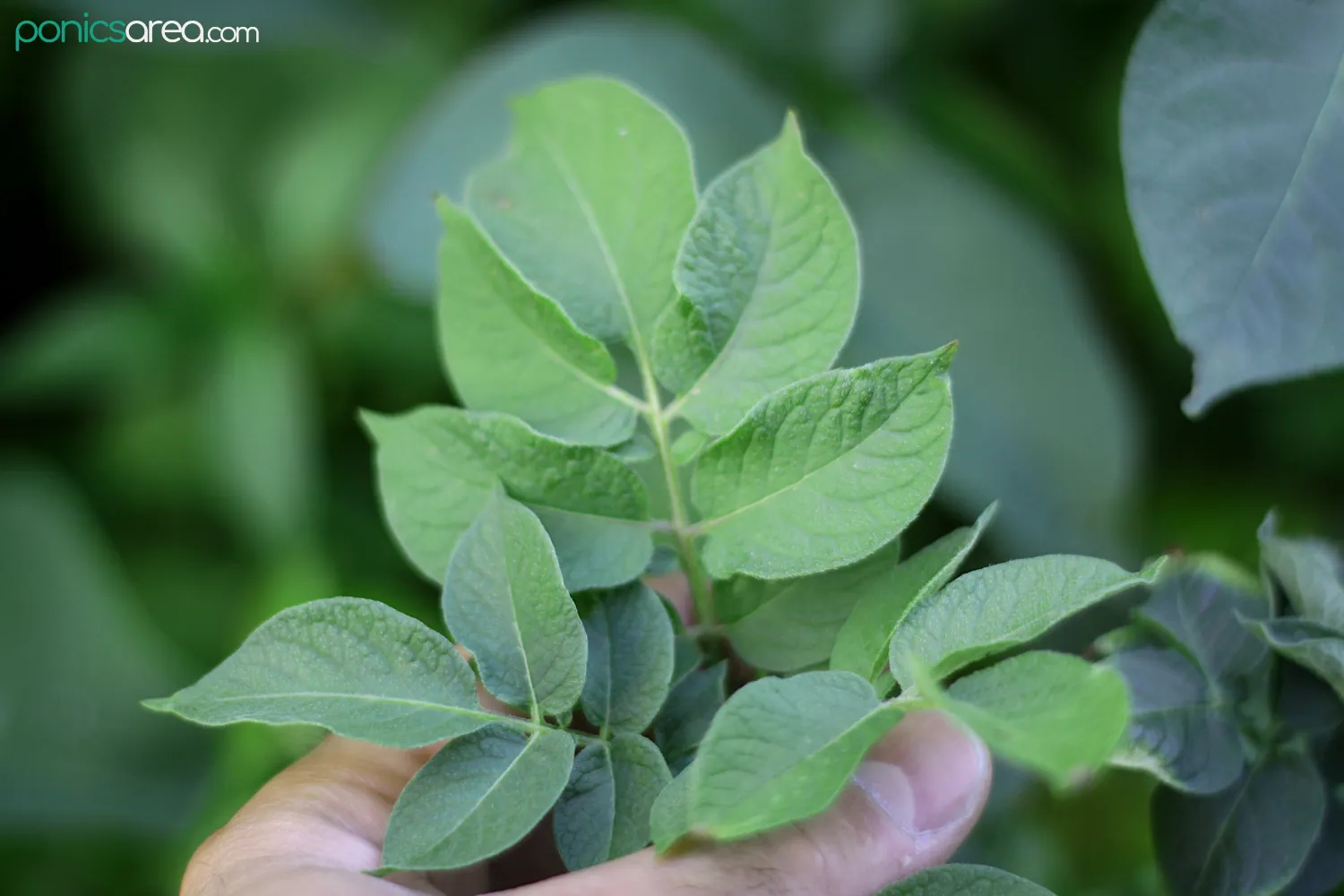
In order to grow hydroponic potatoes, you’ll need to give them lots of artificial light. These are long day plants. So, 14-16 hours under grow lights would be great.
Full spectrum LEDs are one of the best choice for growing potatoes hydroponically.
Growing medium
Potatoes belong to the profound root veggies. That means that the substrate (growing medium) needs to have an adequate length and high profundity.
It also automatically implies that the yield will not be as impressive as what we get in the ground because the plants will be smaller in a hydroponic set-up.
If you’ve ever grown potatoes in the dirt, you know that when it came time for harvest, you had to dig a pretty big hole in order to remove all the many potatoes that a single plant was able to grow. Imagine having the same depth for the growing medium so that you can grow a single potato plant in hydroponics.
Coco coir is a really good growing medium for these vegetables.
A mix of perlite and vermiculite will also work pretty nicely.
Hydroton would be the last on my list.
Hydroponic Potatoes Systems
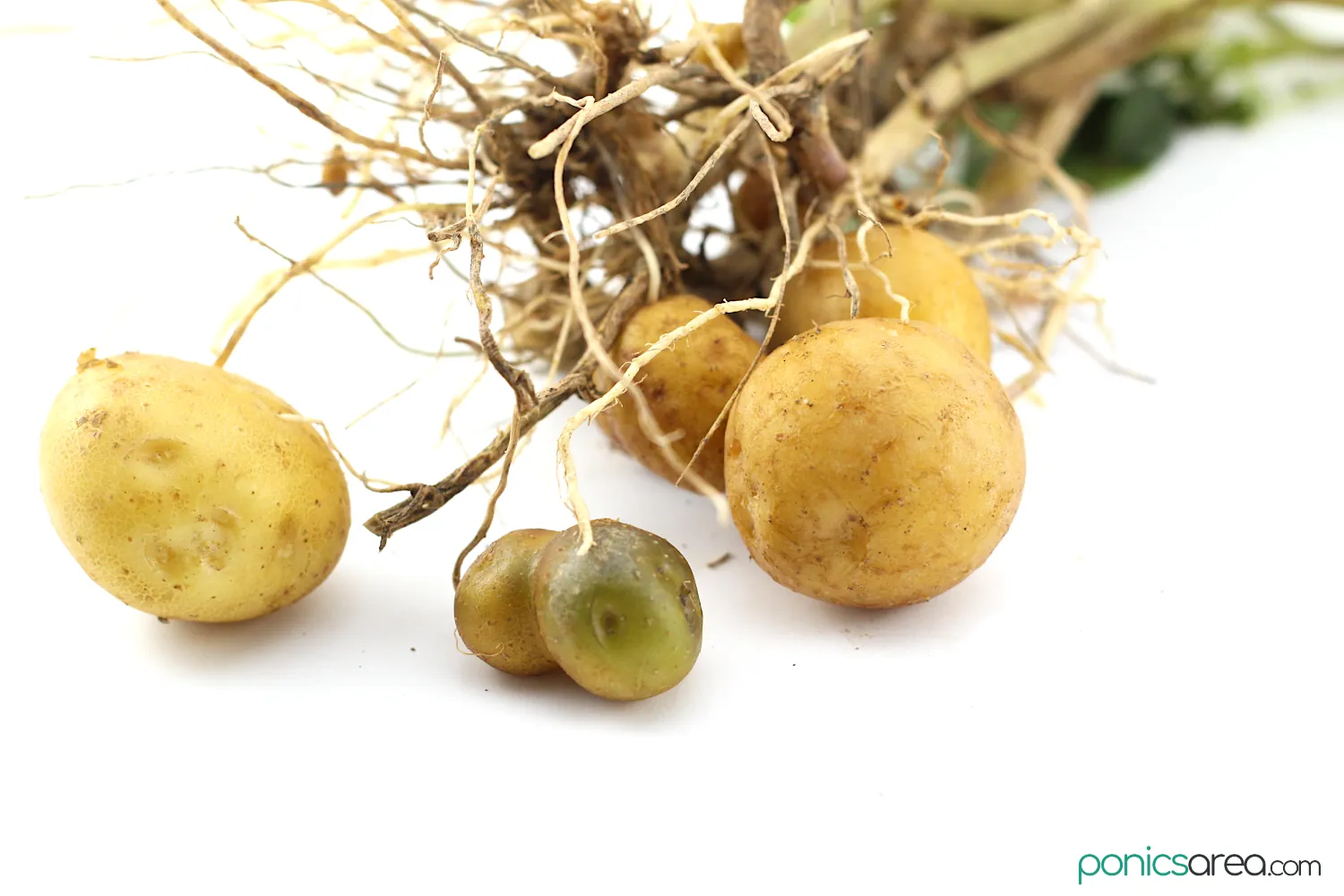
When grown in soil, these vegetables like a moist well-drained soil that doesn’t turn soggy. Why do I mention that when we’re talking about hydroponic systems for potatoes?
Because it means that it’s best to use a system that doesn’t keep the roots continuously wet, that keeps the roots always immersed in water.
I’m pretty sure that you figured out that I’m talking about the DWC systems. Although, you can definitely try to grow hydroponic potatoes in a DWC, if you want.
Don’t Use Net Pots
Whatever system you end up choosing, I just want to tell you that you shouldn’t be using net pots to grow potatoes in.
As I mentioned above, tubers need a lot of space to develop and grow. A net pot can’t provide that sort of space.
The tubers will grow crammed in that net pot until the pressure will force the plastic to crack.
Use Growing Trays or 5 Gallon Buckets with Drip Lines
You absolutely need a grow bed that will provide an adequate length and high profundity.
A 5 gallon bucket also works as long as you fill it with grow media and plant just one potato seed per bucket.
You can use buckets instead of grow trays for hydroponics if you have drip lines for each bucket. You can add as many buckets as you want in this kind of set-up without incurring a large additional cost.
In the buckets, you can place coco coir or perlite as grow media.
You also can’t grow hydroponic potatoes in a NFT with PVC pipes for the same reason that you can’t use net pots: the space is just too narrow, too constricted.
The 2 Stacked Boxes Basic System
You can find an interesting basic system described here. It’s comprised of two containers that need to be stacked one on top of the other.
The first box has holes at the bottom and a fine mesh covering the holes to prevent the growing medium from going into the second box, which will contain the water and nutrient solution.
So, the first box is the grow bed where a mix of perlite and vermiculite is used to place the potato seed into. That’s where it will develop more tubers, resulting into a small potato crop.
Realistic expectations should be set at about 4 pounds of potatoes per box, if it’s a small one.
The difficulty is finding the perfect boxes that can be stacked nicely. The guy in the video states that the can’t remember where he bought the boxes from.
One of the Best Hydroponic Systems for Potatoes
In truth, one of the best systems for potatoes is the drip hydroponics system, which works perfectly for all plants, including larger ones.
It’s also one of the hardest to build at home.
It’s absolutely ideal because the drip system means that water and nutrients are delivered directly to the growing medium on a timer set up by you.
Liquids can be delivered to each individual plant through emitters or drippers on a schedule established by you.
The timer controls how often the water pump will pump up water through tubing.
Some run it 15 mins ON and 15 mins OFF for the day time light cycle, which is a lot, from my point of view.
Others recommend running the water pump 3 times a day for 6 minutes. I belong to this camp.
How often the drips will run depends on how much water you use in your drip, the type of growing medium that you’re using and how quickly that medium gets dry.
The best grow media for the drip system are: peat moss, coconut coir, rockwool. These 3 let the water drain slowly and don’t get too soggy, which is what we should be looking for our hydroponic potatoes.
You can also use gravel or hydroton but you might need to pump up water more often because these two don’t hold on to moisture for long.
Thee beauty with this system is that you can make adjustments to suits your plants.
Alternative: ebb and flow system
A close relative of the drip is the ebb and flow system. They have a lot in common.
If you already have an ebb and flow or a drip, then most of your work is done, you can start experimenting with growing hydroponic potatoes.
Aeroponics and aquaponics are two other great systems where you can grow hydroponic potatoes.
Harvesting
Hydroponic potatoes should be ready 70 days after planting. The growing process is pretty short because seed potatoes are not actually seeds but smaller potatoes to grow new plants from.
I enjoy new potatoes the most, those whose skins are removed just from a simple wash. They have a sweetness that just isn’t the same when they mature and get hardened skins.
Have I motivated you to grow hydroponic potatoes or is the classic method of growing in the ground better for this crop?

